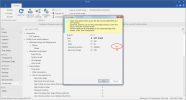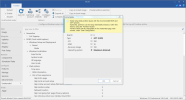The reason apps are being removed is for a more sanitized environment to simulate a specific work lab which is a secure environment with no connectivity. Win Apps do have vulnerabilities occasionally which would then have to be updated which becomes more a hassle in an environment without external connectivity. Even for normal environments to simulate that you're talking airgapping so when you start talking about win apps and airgapping that's not even worth the hassle.1) All my images created with NTLite are hardware-agnostic. I built the images in an internal VM (Hyper-V) environment that does not connect to internet and use a cmd script to automate app installation in Sysprep Audit Mode via an internal share drive.
2) Yes you can, but I do not suggest you remove too much. As long as the apps are not disturbing you should keep them. The point to keep in mind is that you may one day need those apps and you have no way to install them back. So we should cut those apps that you are sure you do not want to see them in your environment. For example, Xbox-related apps are irrelevant and disturbing in a work environment.
Things like office hub, one drive, snip and sketch, one note, etc. Win apps as you know are per user not per machine. I've seen them where even at after uninstalling via powershell they still show up as being under the system profile as "system (staged)". The environment I am trying to simulate is not a everyday workday production environment but more a specific lab use environment performing specific work.
Last edited:


